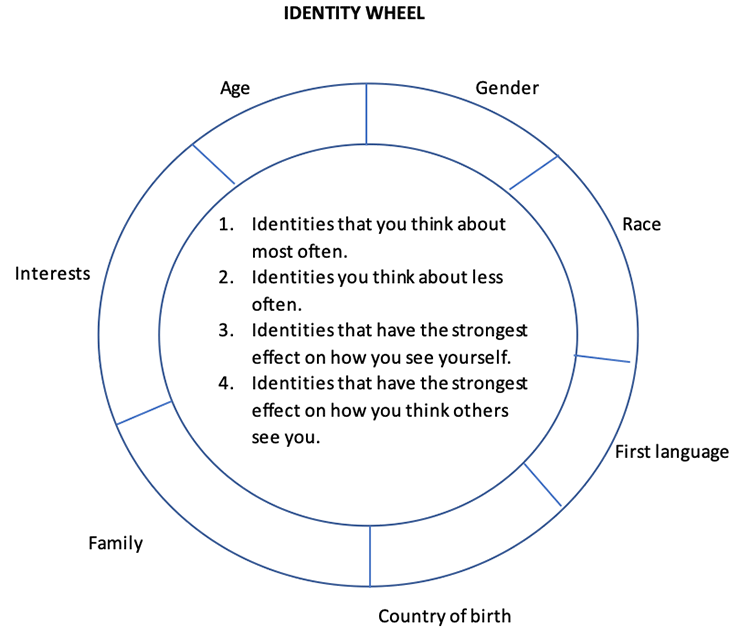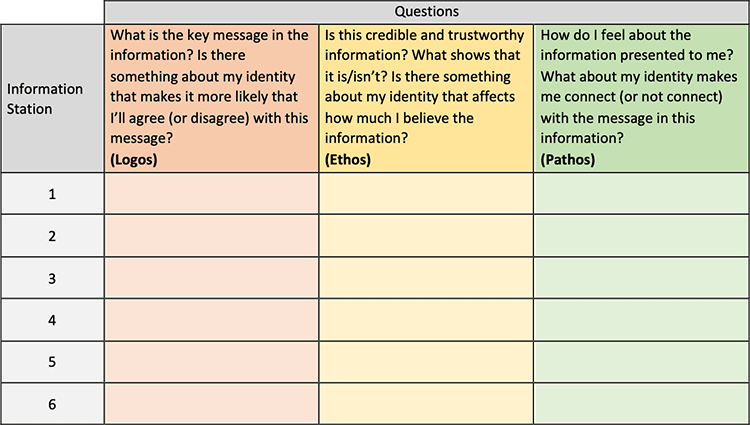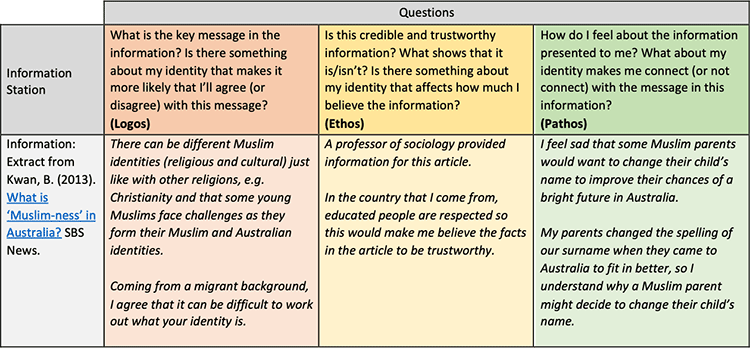Students need to be able to read and process vast amounts of information to make informed decisions as citizens. Given the existence of media bias and irresponsible reporting, they also need to be able to interpret and evaluate which sources of information are credible and valid.
Furthermore, the "texts" that students engage with are varied and multimodal, incorporating
- printed words
- images and sounds, such as
- television
- newspapers
- podcasts
- video
- websites.
Teachers need to consider that students' own social and cultural backgrounds, past experiences and emotions, will influence how they interact with and make sense of these texts. This should be considered when teaching students, so they become "discerning consumers of information" (Cartwright & Reeves, 2018).
The following strategy supports students to read, interpret and evaluate different types of "texts" relating to Civics and Citizenship content.
Information stations using questioning
Students' own prior experiences and perspectives can influence how they read, process, interpret and evaluate a text as they develop their understanding. Texts can be drawn from a range of sources and should be multimodal where possible and represent different viewpoints on the topic, for example, print-based articles with images, documentaries, websites, podcasts. This strategy introduces and encourages students to:
- consider how their identity might influence how they engage with a range of texts
- make meaning and critique texts based on three types of questions which will focus their attention on three aspects:
- logos (rationality, consideration of objective data and impersonal observations)
- ethos (building trust in the moral integrity of the author) and
- pathos (emotional appeals) (Kennedy, 2007 cited in Macken-Horarik, Love, Sandiford & Unsworth, 2018, pp. 146-7).
Preparation
- Select a range of texts to use for a particular civics and citizenship topic.
- For example, if the topic was "Challenges of maintaining a cohesive society", sample texts could include:
- A table group, or station, should be set up before the lesson with one text allocated to each. Table groups should have 4 (no more than 5) students.
- Determine how much time should be allocated for students to engage with the information at each station.
- This will depend on the length and detail of the texts selected and the text-dependent questions that will be asked of students for each text.
- Students should be able to complete all tasks at each station within the same time.
- Resources such as computer and audio equipment may need to be organised before the lesson for students to access particular texts (e.g. a documentary video, a podcast, or a website).
- A number should be placed at each station, so students know which question set they are answering for each and to help students track when they have completed the work at all stations. Questions should be created at each station based on the text. (See Question Grid in Step 5 of During the lesson below.)
(Note: If students are only analysing two texts, for instance, table groups of 4–5 students should still be used. However, some stations will have the same text and associated questions allocated to them and students will only move stations once to engage with only two texts. At least two texts should be used to support students to see different points of view on a civics and citizenship topic.)
During the lesson
- If the strategy is being used to discuss Citizenship issues around diversity, outline points from the
 'Advice for schools when teaching about cultural diversity' (pdf - 201.73kb) to outline key expectations of student behaviour and to encourage a positive, constructive approach to interaction and discussion between students for the activity.
'Advice for schools when teaching about cultural diversity' (pdf - 201.73kb) to outline key expectations of student behaviour and to encourage a positive, constructive approach to interaction and discussion between students for the activity. - Ask students to complete the identity wheel below based on the information in the texts provided. This can be completed from the perspective of the student or adapted so that students complete an identity wheel from the perspective of another individual.
- For instance, if the goal is for students in one group to represent a range of identities (i.e. different ages, genders, races, etc.), you might provide information for students for an identity wheel for such individuals (e.g. a middle-aged, male, Australian born, English first language speaker who loves AFL). Students populate the external sections of the wheel based on the information in the text. They can further categorize those identities based on which matter most in their self-perception and which matter most in others' perception of them.
 (Source adapted from Social Identity Wheel – Inclusive Teaching (umich.edu))
(Source adapted from Social Identity Wheel – Inclusive Teaching (umich.edu))
- Outline to students how the learning activity is structured [HITS Strategy 2]. For instance, tell students that they will:
- Tell students that they will refer to their Identity Wheel and the information at each station to complete the same set of questions for each station.
- Instruct students there are three types of questions that they will answer at each information station and these questions will focus their attention on three aspects: logos, ethos and pathos:
- Outline what is meant by each type (or mode) of question. For instance:
- Logos – These questions will look at the message in the information at each station including the data, reasons and arguments that might be seen in the information.
- Ethos – These questions will look at how trustworthy or credible the information at each station is
- Pathos – These questions will look at how the information at each station appeals to the student as a reader in terms of their beliefs, values, emotions, etc.
An example of a question grid for students to use as they engage with texts at each information station with questions relating to these types is given below.

(Questions adapted from McIntyre, 2019, p. 41)
- Students engage with each text at each station.
Strategy in practice
Focus
'How religious groups express their identities and how this expression can influence perceptions of others and others' perception of them'
Information (e.g. articles, images, audio-visual materials) sources such as:
An example of possible student responses to information at a station might be:

Links to the curriculum:
VCCCC026
- Visit each station as students complete the steps. Answer any questions student might have about the learning activity instructions or the "texts" (e.g. defining unfamiliar words, assisting with any potential IT issues, etc.)
- Once students have visited all the stations, pose reflection questions to the class:
-
How would you summarise what you have learned about the topic in no more than 3 sentences?
-
What conclusions have you drawn about the topic now that you have analysed the texts on each of the stations?
-
Did you find two or more texts that shared similar points of view/perspectives? Which stations had these texts? What words, images or sounds in these texts suggest that they share similar points of view/perspectives?
-
Did you find any text that had a different point of view/perspective to others? Which station had this text? What words, images or sounds in this text suggested to you that it shares a different point of view/perspective?
-
Which text did you find most represented your point of view/perspective on the topic? Explain why.
-
What questions do you still have about this topic now that you have visited all the stations?